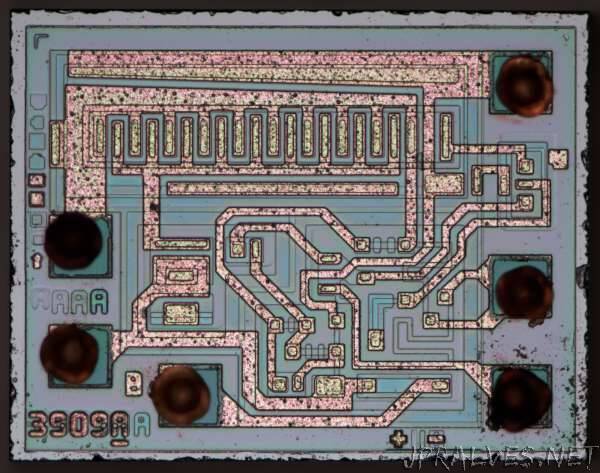
“How do you make an LED blink? A vintage way is the LM3909, a chip from 1975 that can flash an LED for a year from a single flashlight battery. This chip has some surprising features, such as a charge pump that lets you power a 2-volt LED from a 1.5-volt battery. This IC was designed for simplicity, using just an LED, external capacitor, and battery. In this blog post, I reverse-engineer its silicon die.
The photo below (from Zeptobars) shows the die under a microscope. This chip is fairly simple, even for 1975, with just a few transistors and resistors. The six dark circles show where the bond wires were attached. The copper-colored lines are the metal layer on top of the silicon, wiring the components of the circuit together. The silicon itself has a purple tint in this photo. Regions with different tints are doped differently to form N-type and P-type silicon. These regions form the transistors and resistors, as I’ll explain below. The large, zig-zag power transistor at the top of the chip is the most visible transistor. The part number “3909” is visible, along with various “A” alignment marks.
How it works
The underlying idea of the IC is that the external capacitor slowly charges through the internal timing resistor. When the capacitor reaches about 1 volt, the LED is energized and lights up briefly. This discharges the capacitor and the cycle repeats. Because the LED is only powered in brief pulses, the circuit’s power consumption is low, averaging about 550 µA.
The first phase, charging the capacitor, is shown in the schematic below. The red line indicates how the battery (V+) charges the positive side of the external capacitor (on pin 2) through two 400Ω resistors. The negative side of the capacitor is connected to the negative side of the battery through the 3K resistor. The flashing frequency can be slowed down by disconnecting pin 1. In that case, the capacitor charges through the additional resistance of the “Slow RC” pin.”
